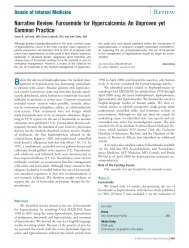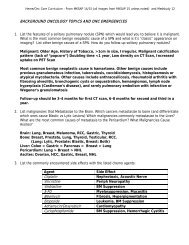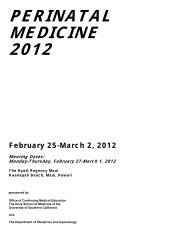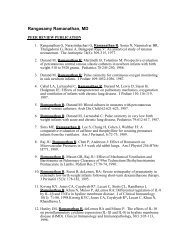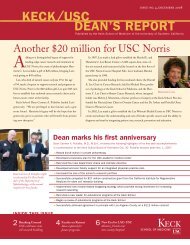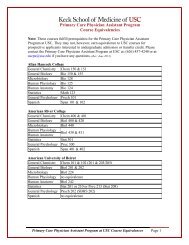Program Book - Keck School of Medicine of USC - University of ...
Program Book - Keck School of Medicine of USC - University of ...
Program Book - Keck School of Medicine of USC - University of ...
- No tags were found...
Create successful ePaper yourself
Turn your PDF publications into a flip-book with our unique Google optimized e-Paper software.
efore initiation <strong>of</strong> dialysis. It functions best in patients less than 65 years <strong>of</strong> age but stillhas significant complications such as hematoma, pseudoaneurysm, and fibrosis. Thebrachial axillary graft functions satisfactorily in the patient who has on- going dialysisand an urgent need for an access. With care, early puncture can usually be made safelyin standard wall thickness PTFE grafts within approximately 48 hours. Brachial artery toaxillary grafts form less venous myointimal hyperplasia in the older patient and canundergo outflow revision usually by short endovascular covered stents or occasionallyopen outflow revision in order to maintain patency. Whether the access is autogenousor a prosthetic construction, it is important to verify axillosubclavian vein patencypreoperatively.Fourth, it is unlikely that preemptive percutaneous transluminal angioplasty <strong>of</strong> thevenous outflow will prolong patency <strong>of</strong> the PTFE graft. In five <strong>of</strong> six randomized trials,the increased rate <strong>of</strong> PTA intervention did not result in any prolongation <strong>of</strong> graft survival.On the other hand, the AV fistula that is slow to mature or failing, will respond toaggressive PTA <strong>of</strong> strictures. PTA with or without a stent should be reserved forphysiological dysfunction in the AV graft specifically an increasing trend in venousreturn pressure, or a flow decrease to less than 600 mls/min in association with agreater than 50 % luminal diameter reduction. Remember, the median duration <strong>of</strong>extended patency with PTA is approximately 3 months which is only half the patencythat can be obtained with open patch angioplasty although the former technique issimpler and now holds sway among most access surgeons.Fifth, central venous catheterization with a tunneled, cuffed catheter may be the onlytechnique necessary for the older patient with chronic renal failure requiring64



